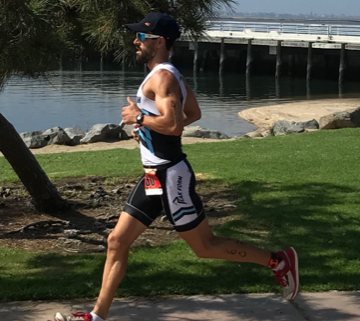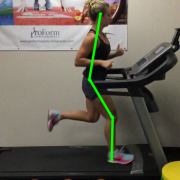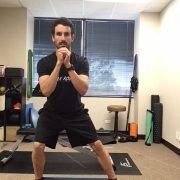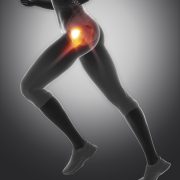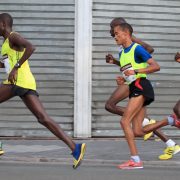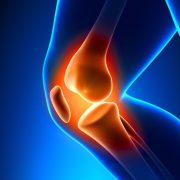Increase your Cadence!
Increase Your Cadence!
Increasing running cadence will help reduce your risk for injury, and make you a more efficient runner (potentially faster runner as well)! Now that you know the benefit of increasing cadence, let’s go back and look and some of the main points that go into tweaking this aspect of running.
Break the Injury Cycle
Annually, 37%-52% of runners experience a running injury. That is VERY high injury rate! Many of the injured runners I treat are new to running, want to manage the symptoms before their upcoming race, and then stop running afterward because of the nagging symptoms they are experiencing. The following year, the same cycle occurs: signed up for another half marathon, developed an injury, barely made it through the race, and then stopped running due to the nagging symptoms. Stop it! Make changes to why you are injured and then you will no longer have to worry about dealing with nagging injuries. The BIGGEST change you can make is improving your turn over or in other words, increasing running cadence.
What is Cadence?
Running cadence is the number of times your feet come in contact with the ground, measured in steps per minute (every time either foot touches the ground) or strides per minute (every time the same foot touches the ground). The goal cadence is 170-190 steps per minute or 85-95 strides per minute.

This moment was late in a Half Ironman run, my cadence dropped to 170 (normally run comfortably in mid 180s) and began running with more of a heel strike pattern; you can see the lead leg out in front of the body which will increase shock to the body.
How does this help decrease risk for injury?
Increasing running cadence to 170-190 steps per minute, decreases the vertical loading rate during the gait cycle. Basically, you run with less bounce and less impact to your legs reducing the amount of force traveling through the body. Running with a slower cadence (< 170) allows your foot to travel further away from the body before initial contact, and results in more of a “braking” force once contact is initiated (see photo). Your muscles, tendons, ligaments, and joints absorb that extra shock and remain under load longer due to the foot being further away from the body. Increased load + increased time under load = increased strain to muscles, tendons, ligaments and joints which will eventually lead to failure once enough strain has accumulated. Main take away, increasing running cadence decreases the vertical loading rate, loading time, and overall strain in the body.
How do I measure cadence?
Easy! If you have a GPS watch, there is a setting for cadence (most watches these days) that you can select to show on your display screen while running.
If you do not have a GPS watch with that function, then use a timer and count your steps to get your cadence as follows: count the number of steps you take for 20 seconds. Take that number and multiply by 3 to get your steps per minute. To make the math easier, count every time the same foot touches the ground to get the number of strides you take. Multiply by 3 to get strides per minute (85-95 strides is the goal).
How long will it take to run naturally with a faster cadence?
It can take 3-6 months before you are able to run at that range effortlessly. We recommend doing cadence drills twice a week. Do not over think your cadence and force yourself to run with a faster cadence every run. Increasing running cadence takes time and patience. Every 6 weeks, run 3 miles and try to keep the cadence elevated the entire run; remember what the average cadence was and try to increase it the next test run.
The only way I can get my cadence up is to run faster, is that normal?
That is very normal initially. However, with practice you will learn how to run with a faster cadence at all speeds! Technically you can “run” with a 170-190 cadence while not moving. What changes is the width of the steps when changing speed but the cadence should still fall into that range. Our advanced cadence drills help with this.
Beginning Drills
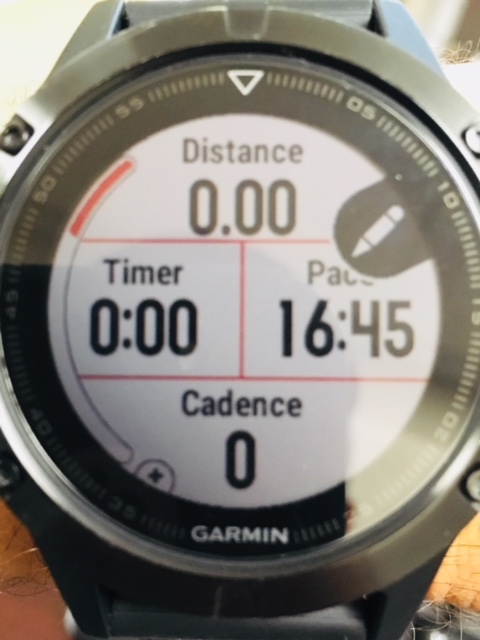
Garmin Fenix with cadence option
No GPS watch- Run 20 seconds as you normally would, count your steps (or strides) for the next 20 seconds, then go back to your normal running for the last 20 seconds. Repeat 5 times
GPS watch- Set the display to show cadence, run for 1 minute working on getting your stride turn over quicker. Look at the watch periodically to see the cadence. Repeat 5 times.
RunTempo- Application for smartphones. It is a metronome that you can set a specific cadence. Every time you hear a “beep” your foot should hit the ground. If you know your cadence is let’s say 155, set RunTempo to 165 and run for 1 minute. Once you can easily match the cadence, bump up the cadence by 5 until you are in range. Once in the proper range, experiment by working at the different cadences 170-190 to see where you “feel” the best.
Advanced Drills
Cadence Test- Every 6 weeks, run a 5k and try to keep your cadence high the entire time. Make note of the average cadence after the run. Use that average cadence as your new benchmark for cadence drills. If you averaged 165, perform drills with the goal of 170 or 175. Repeat test and check again 6 weeks later.
Treadmill Roller Coaster– Once you can easily run in the 170-190 steps per minute range, now is the time to work on maintaining the cadence at different speeds. Set up a treadmill for 2 minute intervals. The first two minutes, set the treadmill to the slowest pace you can maintain your elevated cadence. For the next two minutes, bump up the pace to a tempo effort. The goal is to maintain the same cadence when switching from the slower pace to the quicker pace. What changes is the step width, but cadence should be the same! Repeat for 5-10 rounds.
Super Cadence Drills– Find a long gradual downhill. Run with a “as fast as possible” cadence on the way down for 1 minute. The goal is to get your cadence as fast as possible often reaching above 200 steps per minute. Repeat 5-10 times. I recommend this drill for triathletes to get there legs used to having a very quick turn over so when they run off the bike and their legs feel sluggish, what feels “slow” is actually still in the recommended cadence range due to the practice at running with an extremely high cadence.
There you have it, one of the easiest yet best ways to correct running form is increasing running cadence. If you are dealing with an injury, please get evaluated by a sports minded healthcare provider. At our Mission Valley sports injury clinic, we help countless runners overcome injury. Changing cadence while injured may result in worsening of symptoms so it is important to have a proper evaluation before making any significant changes to your workouts.
Peak Form Health Center
Please call 619-818-4306 or visit www.peakformhealthcenter.com to schedule!
2635 Camino del Rio South #200
San Diego, CA 92108

